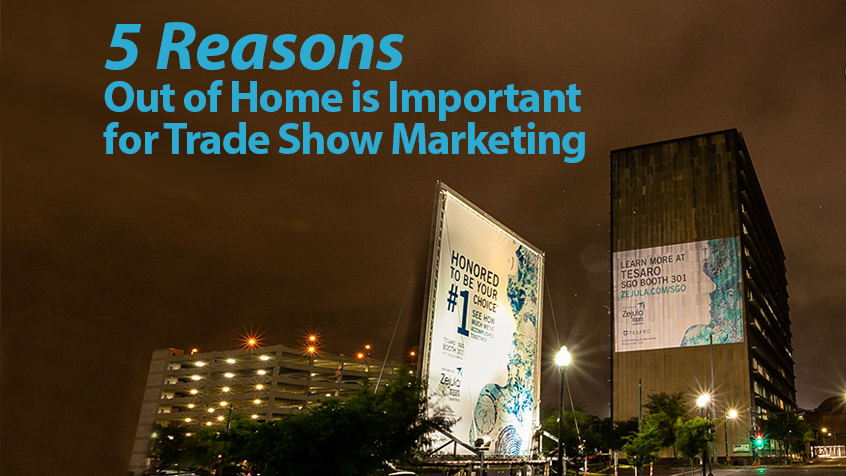Measuring the return on investment (ROI) of out of home media (OOH) advertising has long been a challenge, primarily because of the gap between your customer’s online and offline interactions. In the past, gauging OOH ROI relied on labor-intensive methods like surveys, focus groups, and tracking foot traffic to physical locations. These approaches were time-consuming and offered only limited insights into the effectiveness of OOH campaigns. Thanks to the widespread use of smartphones, measuring OOH ROI has become more accessible and precise. In this article we’ll cover how to measure OOH advertising ROI and bridge the offline-online divide.
Bridging the Offline-Online Divide
Today, advertisers have various tools to help bridge the offline-online divide and measure OOH advertising’s ROI. One effective method involves incorporating Quick Response (QR) codes and Near Field Communication (NFC) technology into OOH ads. These tech features enable consumers to smoothly transition from encountering a physical ad to engaging with digital content, including landing pages, websites, videos, or purchasing products and services through exclusive offers.
Another practical strategy involves using geofencing and location data to activate mobile ads or push notifications when your audience is near or moving away from your OOH ads. Some of the most creative campaigns create specific messaging based on location, weather, or time-of-day data. For instance, you can showcase different ads depending on factors like temperature, traffic, or the season while aligning them seamlessly with your digital and social media campaigns.
Employing concise and memorable URLs in advertisements simplifies the process for consumers to access relevant online landing pages, while social media integration encourages interaction with the brand’s online platforms. Interactive elements like contests and text-to-engage promotions incentivize consumer engagement with OOH ads and produce measurable outcomes.
Remember, tailoring your message and incentives to your target audience is crucial to creating successful OOH campaigns.
Measuring Your OOH Advertising ROI
Setting up an effective out of home campaign measurement strategy is crucial for any company looking to maximize the impact of its advertising efforts. When properly executed, OOH campaigns drive significant results. Regularly and accurately measuring results helps you understand the campaign’s success and identify areas for improvement.
Here’s a detailed look at the steps you can take to measure OOH advertising ROI:
1. Define the goal(s) of the campaign: Before launching an OOH campaign, it’s imperative to define clear and measurable objectives. Whether the goal is to increase brand awareness, boost website traffic, drive in-store visits, or generate leads, having well-defined goals will provide a roadmap for measuring success.
2. Review what you’ve previously done to achieve similar goals: Companies should leverage past campaigns with similar objectives as a reference point. Analyze what worked and what didn’t in previous campaigns. Incorporate those insights into your new OOH campaign strategy and goals. Reviewing past campaigns also helps you set realistic expectations and guide the development of a more effective campaign.
3. Get specific about the type of engagement you want: When setting goals, specificity is key. Instead of simply aiming for increased website traffic, define the desired actions you want users to take on your website. Desired activities can include signing up for a newsletter, making a purchase, opting into an email list, completing a survey, or downloading a whitepaper. Specific engagement goals will help in tracking and measuring success accurately.
4. Set up your campaign with creative messaging that incentivizes customers to engage: Creative messaging is the heart of any OOH campaign. Campaign content must be compelling, concise, and relevant to your target audience, or they won’t engage. It should also provide a clear incentive for the audience to take the desired action. Whether it’s a limited-time offer, a discount code, or an exclusive promotion, the creative messaging should drive your audience toward engagement.
How to Measure the Impact of Your OOH Campaign
Accurately measuring the right metrics is crucial to evaluating the success of your campaign. Here are some key metrics you should track for every campaign:
1. Traffic to the desired digital location: Monitoring the increase in traffic to your website’s designated landing page or specific sections is a fundamental metric. Google Analytics or data from your social media channels provide detailed insights on the volume, source, and behavior of traffic generated by your campaign. Concise data helps you gauge the effectiveness of your OOH campaign in driving online engagement.
2. Frequency of the desired action: Track the conversion rate of visitors who took the desired action on your website, such as signing up for a newsletter or making a purchase. This metric directly reflects the campaign’s impact on achieving its specific engagement goals. If the desired action requires multiple steps, keep an eye out for drop-offs at any point. People dropping out of the process typically indicates a change is needed to increase your conversion rate.
3. Overall impact on sales, enrollment, etc.: Ultimately, the success of an OOH conversion campaign should align with broader business objectives. Monitor the overall effect on sales revenue, customer acquisition, enrollment numbers, or other relevant KPIs. Analyze the changes in these metrics during and after the campaign to determine the campaign’s ROI.
Thanks to these innovative tools and strategies, you can learn how to measure OOH advertising ROI. By following these steps and continually analyzing campaign performance, you can make data-driven decisions to refine and optimize future campaigns for even greater success.
Contact EMC Outdoor’s team today for more information about how to bridge the gap between offline and online campaigns.





![Out of Home and the Casual Consumer [Infographic]](https://www.emcoutdoor.com/blog/wp-content/uploads/2018/05/HEADER-100.jpg)